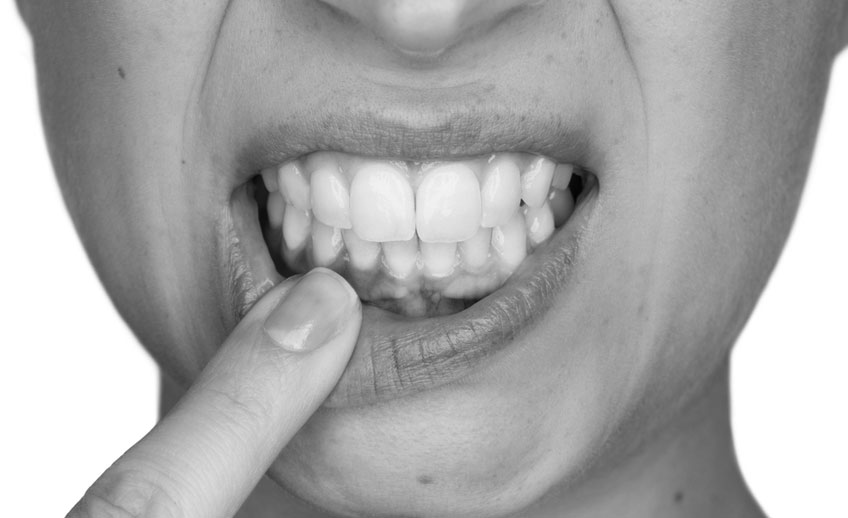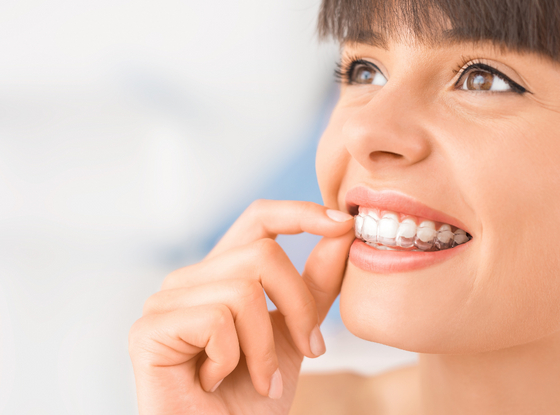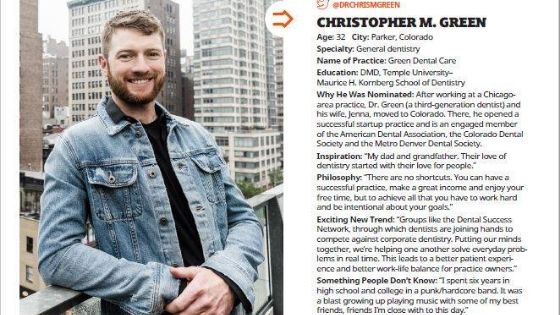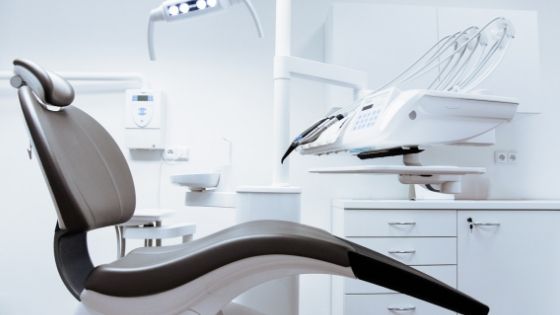The Benefits of Fluoride Treatments
The Benefits of Fluoride Treatments

Fluoride is a naturally-occurring mineral that has been discovered to have protective effects on teeth. This substance can be put on your teeth as a gel, mouth rinse or varnish. Once on the surface of your teeth, it soaks into the tubules (tiny holes) in order to kill any bacteria there and strengthen the enamel of your teeth. In this article, you’ll discover why you need to get fluoride treatments at Green Dental Care at least twice each year.
Why Fluoride Treatments are Good for You
Remineralization. Fluoride treatments help to restore minerals to tooth surfaces that have had these minerals eroded by acidic food and drinks. Bacterial activity also erodes tooth surfaces, and regular fluoride treatments at Green Dental Care can help to restore those minerals so that the teeth retain or regain their strength.
Prevents cavities. Fluoride also helps to combat tooth decay in both children and adults. We asked our friend, Dr. Ben Kacos, a dentist in Shreveport, LA, about the benefits of fluoride. Dr. Kacos explains that fluoride goes in and kills any bacteria which is lodged in the tubules of your teeth. The fluoride also fills the tiny microscopic holes formed in the initial stages of tooth decay. This prevents the decay from progressing into the deeper layers of the teeth.
Reducing the cost of dental care. The modest fee that you pay for a fluoride treatment at Green Dental Care in Parker, CO pays off massively in the savings you make on dental care costs. The protective effects of the fluoride on your teeth mean that you will have fewer caries or tooth decay, and that means that the money you would have spent on treatment for these conditions is saved.
Preserves your perfect smile. As already mentioned, fluoride protects your teeth from various problems, such as gum recession due to gingivitis and teeth discoloration since the fluoride fills the tubules and makes it harder for stains to form. Regular fluoride treatments at Green Dental Care, therefore, increase the odds of having your beautiful smile for your entire life.
Preventing teeth sensitivity. As enamel is eroded due to bacterial activity and acidic eats and drinks, the soft dentine is exposed and your teeth can become sensitive each time you consume hot or cold substances. Fluoride gets into the tiny pits formed in your teeth and prevents the softer dentine from being exposed, hence averting sensitivity.
How Often Should I Get a Fluoride Treatment?
For most patients, Dr. Chris Green recommends that they get a fluoride treatment once every six months. However, the frequency of treatments can vary depending on a variety of factors. For instance, Parker, CO dentists recommend that people who face a higher risk of caries, such as those with poor oral hygiene habits and those with limited or no saliva production, get fluoride treatments once every three months. For some people, even a single fluoride treatment in 12 months may suffice.
The exact frequency of fluoride treatments that you need will, therefore, be determined after Dr. Chris Green examines your teeth and recommends the best frequency of treatments for you.
How Are the Fluoride Treatments Done?
The most common way through which a fluoride treatment is administered at Green Dental Care is by “painting” it on the surface of your teeth. This layer of fluoride stays on your teeth for 4-6 hours before you can brush your teeth to remove the excess fluoride.
Fluoride treatments can also be administered by the use of a tray which is fitted onto your teeth for the required duration. Your dentist in Parker, CO will then remove the tray and ask you to brush your teeth.
Alternatively, the Parker, CO dentist may give you a fluoride mouthwash and ask you to rinse your teeth with it for a few seconds after which you spit out the liquid. After a set interval, you can brush your teeth once the fluoride has penetrated the surface of your teeth.
How Soon Can I Eat After a Fluoride Treatment?
Dr. Chris Green may ask you to wait for about 30 minutes before you eat anything. This precaution is intended to prevent what you eat from washing away the recently applied fluoride on your teeth.
However, it is also possible to eat right away after you have had a fluoride treatment as long as you don’t consume anything very hot or sticky. The hot food or drinks may melt the fluoride from your teeth, while the sticky eats can adhere to the fluoride and remove it from the surface of your teeth.
As you can see, fluoride treatments are simple, yet packed with benefits for your oral health. Contact Green Dental Care today if you haven’t had a fluoride treatment in more than six months. Our friendly staff will clean your teeth and administer this protective treatment so that you can enjoy a lifetime of good dental health.
The Green Dental Care Dental Savings Plan, DSP
The Green Dental Care Dental Savings Plan, DSP

At Green Dental Care, we take you and your family’s dental health so seriously that we have designed a dental savings plan (DSP) to cater for your dental care even if you don’t have insurance. Read on and discover more details about this dental savings plan and how you can benefit when you enroll for it.
What You Get in the Dental Savings Plan
Green Dental Care’s DSP includes;
- 1 Comprehensive Dental Exam
- 1 Annual Dental Exam
- 1 Emergency Dental Exam
- 2 Professional Dental Cleanings
- 2 Screenings for Oral Cancer
- 2 Fluoride Treatments when you come for the dental cleanings.
- Needed dental x-rays during the year of the DSP.
- A variety of discounted services and dental procedures.
DSP Membership Options
At Green Dental Care, Dr. Chris Green, and the entire team believe that there should be no barriers to quality care for people regardless of their insurance status. The following fee schedule has, therefore, been designed to take care of the dental health needs of individuals and families of various sizes as outlined below.
- Single/Individual membership $365 (You save $362 from the fees you would pay for the services included in the plan)
- Dual membership $714 (the two of you save $740 on the normal cost of the services you receive)
- A family of 3 $1,038 (this comes with savings of $1,143 off what you would pay for the services provided under the plan)
- A family of 4 $1,338 (you get to enjoy savings of $1,570 off the cost you would incur if you weren’t on this plan)
- Each additional family member once the four members have been registered attracts a fee of $199.
What Discounted Services Do DSP Members Qualify For?
Root canals, fillings, and crowns. People who are enrolled in the dental savings plan and need these dental procedures get a 15 percent discount on the total cost of the procedures.
Invisalign and other orthodontic procedures. Lack of dental insurance should not stop you from getting the best orthodontic treatment, such as the use of Invisalign to treat underbites, overbites, and other orthodontic issues. For this reason, Green Dental Care in Parker, CO, offers a discount of $500 from the total cost of the needed orthodontic treatment.
Teeth Whitening. We know that over time, medications, pigmented drinks and foods, and other factors can cause your teeth to become discolored or stained. The members of the dental savings plan enjoy teeth whitening treatments as part of their package for having this plan. This treatment alone would cost $325 if you were to pay for it out of pocket!
Have More Questions?
Feel free to call Green Dental Care today. Our staff is waiting to answer any question you may have about the Dental Savings Plan, and any other question about your overall dental health. We want to make sure that you receive the dental health care you need throughout the year whether you have insurance or not, so get in touch with us today!
Dental Implants vs. Bridges
Dental Implants vs. Bridges

Two popular options that many people consider when they want to replace missing teeth are dental bridges and dental implants. The key question which each person wants to answer is, “Which option is right for me?” This article discusses dental implants vs. bridges and other related questions.
How Dental Implants Work
A dental implant is an artificial root of a tooth anchored in the position left by the missing tooth. The implants are usually made from titanium, a metal which has distinguished itself as being readily accepted by the body and its high durability. Dr. Chris Green, a dentist in Parker, CO, explains that after the implant has been surgically placed, a temporary covering is placed on it as osseointegration (a process through which the dental implant fuses with your jawbone) takes place. Osseointegration can take up to six months to be completed, but this is time well spent because the outcome is a very stable and long-lasting prosthetic. The dental experts at Green Dental Care will remove the protective covering on the implant and replace it with a temporary crown once osseointegration has taken place. This temporary crown has a base which guides the gum on how to grow around the implant. The final stage of this process entails removing the temporary crown and placing a permanent crown in its place.
How Dental Bridges Work
Picture a bridge on a river if you want to grasp how a dental bridge works. The bridge on the river is supported on both sides of the river and the middle of the bridge is suspended over the water. Similarly, a dental bridge replaces a missing tooth by relying on the surrounding teeth to provide support to the artificial tooth. A crown is placed on the neighboring tooth on either side of the gap and the crown taking the place of the missing tooth fills the gap. The process of getting a dental bridge typically takes a shorter time than the time needed to get a dental implant. However, Dr. Chris Green explains that a dental bridge can be seen as more invasive because the neighboring teeth onto which crowns are to be placed have to be filed down to create room for those crowns. This step is irreversible.
Are You Eligible?
Dental bridges and dental implants both have some requirements which one must meet before being found fit for these restorations. Your eligibility will be ascertained during your initial consultation with Dr. Chris Green.
Experts usually wait until someone is passed adolescence in order to be eligible for dental implantation. This milestone is necessary because an implant should be placed when the individual has passed the stage when their bones are still growing. Your dentists at Green Dental Care will also use a CT scan or an x-ray to assess the bone quality and density for successful dental implant placement. People with insufficient bone mass may undergo a bone graft so that ample support for the implant is available. Research has shown that smoking increases the risk of dental implant failure, so you will be advised to quit smoking before dental implantation can take place. People with cancer, diabetes or periodontal disease may need to have those conditions managed before dental implantation.
Eligibility for dental bridges isn’t as restrictive as that for implants because the process is, in some respects, less invasive than dental implantation. The health and stability of the surrounding teeth is the most important eligibility factor, according to Dr. Chris Green. For example, tooth decay may render the neighboring teeth too weak to take on the task of supporting the dental bridge. Additional procedures may be required to fix any issues which may compromise the ability of those neighboring teeth to support the bridge.
The Cost of Dental Bridges & Dental Implants
Many times, patients opt for implants or bridges depending on their immediate ability to pay for either one of those procedures. However, the cost can be a tricky factor to base your decision upon because the price tag you see may not tell the whole story about the cost of these options.
For example, the process of getting a dental implant may cost twice the cost of a dental bridge. This cost excludes the cost of any other procedures, such as bone grafting, which may be needed before you get your restorations.
However, the experts at Green Dental Care in Parker, CO caution that sticker shock should not lead you to discard implants as an option. This is because if well cared for, dental implants can last an entire lifetime. We asked our friend, Dr. Ben Kacos, a dentist in Shreveport, LA, about the ROI of dental implants. Dr. Kacos says, “Dental implants have incredible durability which makes them more cost-effective in the long term since dental bridges aren’t as durable and will need to be replaced after 10-20 years. The time and money which you spend on replacement bridges can turn out to be higher than what is required for a one-time investment in dental implants.”
Have you lost a tooth or teeth and want to explore tooth replacement options? Contact Green Dental Care and talk to one of our professionals about your needs. Dr. Chris Green and his team will examine you and make recommendations regarding the most cost-effective way to restore your smile.
Must-Knows About Periodontal Disease
Must-Knows About Periodontal Disease

What You Should Know About Periodontal Disease
Periodontal disease is a common infection which damages the gums and alveolar bone surrounding one’s teeth. If left untreated, the condition can worsen and cause you to lose the affected teeth, in addition to causing other systemic health problems, such as heart disease. At Green Dental Care, we take this infection very seriously and take the following measures to address it.
The Preliminary Examination
As soon as you come in with a suspected case of periodontal disease, Dr. Green will take some gum measurements to ascertain the size of the gingival pockets. Gingival pockets are the gaps between one’s teeth and gums. If this pocket measures 3mm or less, you are regarded as normal. Bigger pockets which are 4-5mm wide signal gingivitis (the initial stage of periodontal disease). If your dentist in Parker, CO finds that your gingival pockets exceed 5mm, you will be categorized as someone suffering from periodontal disease and in need of urgent treatment.
Another step taken during your initial assessment entails getting intraoral images using a camera. These images reveal where plaque and calculus (tartar) have accumulated around your teeth.
Dr. Chris Green will also order dental x-rays in order to view the condition of the teeth beneath the gumline. The roots of your teeth have soft bone coverings called alveolar bone. Periodontal disease gradually eats away at this bone tissue in an irreversible process. The x-rays help to show to what extent this damage has occurred.
Treating Periodontal Disease
Once all this information has been gathered, Dr. Chris Green will design an appropriate treatment plan to address the specific magnitude of the gum disease. The following are some of the steps taken to treat periodontal disease at Green Dental Care in Parker CO.
Root Planing and Scaling: Root planing and scaling refers to the process by which a dental scaler or ultrasonic instrument is used to remove bacterial pockets and plaque or tartar from beneath the gumline. The objective is to prevent periodontal disease from getting worse. Scaling smoothens the surfaces from which bacteria has been removed so that further colonization doesn’t take place. This treatment procedure is done after administering a local anesthetic to deal with any pain triggered during the procedure.
Medication: Your dentist in Parker, CO may also opt to use medication alongside root scaling and planning as a way to treat periodontal disease. The medications range from prescription antibiotics, antibiotic gels, and prescription mouthwashes and rinses. These target the microorganisms in your gums and teeth in order to bring down inflammation and allow the gums to heal.
Surgery: Some severe cases of periodontal disease may require surgical intervention in order to treat the infection. For example, the professionals at Green Dental Care may recommend flap surgery as the only feasible way to remove the bacteria which is lodged deep within your gum tissue. Flap surgery can also be performed to remove a section of the gum so that what is left fits optimally on the tooth affected by periodontal disease. Tissue and bone grafts may also be performed to cover the parts of roots which have been exposed as a result of periodontal disease.
Regardless of the treatment option selected, Dr. Chris Green will advise you to pay additional attention to your oral care at home. This added vigilance is necessary to prevent recolonization by bacteria.
Your treatment may also require several visits, especially if the problem was extensive. If one visit is enough, another follow-up visit may be scheduled after three months to clean out the gingival pockets and to monitor how well you are healing. Don’t miss this follow-up visit because you will not know whether additional treatment is required or what you received was sufficient.
As already mentioned, the initial stage (gingivitis) of periodontal disease can be reversed by paying more attention to your oral hygiene. As the disease progresses, it causes damage which is irreversible. Contact Green Dental Care and schedule an appointment as soon as you suspect that you could be having periodontal disease. The sooner you commence treatment, the higher the chance that the disease will be stopped before it causes extensive damage to your oral health.
Caring for Your Child’s Teeth
Caring for Your Child’s Teeth

Caring for Your Child’s Teeth
Helping your child form dental care habits at an early age will ensure strong healthy teeth that will last a lifetime. Experts at Green Dental Care in Parker, CO share the following tips for taking care of your child’s teeth.
Don’t Wait for Teeth to Erupt Before Commencing Oral Care
Oral care begins as soon as a baby is born. Don’t wait until you see the first teeth erupting in order to start taking care of your child’s oral health. Instead, Dr. Chris Green, a dentist in Parker CO, recommends that you use a damp cloth to wipe the gums of the baby after every feeding session. This will remove any food residues which may have fed bacteria and triggered oral health issues, such as infections.
Regulate Feeding Schedules
It is also unwise to leave your baby with his or her feeding bottle throughout the night or day while the baby is in the crib. Unregulated feeding increases the likelihood that oral bacteria will thrive in the mouth of your baby since there is unlimited access to sugary substances. Dentists in Parker, CO recommend that you take away the feeding bottle as soon as the baby is full. Follow this with wiping the gums using a damp cloth as suggested earlier.
Start Brushing Once Your Child’s Teeth Erupt
Dr. Chris Green explains that two front teeth in the lower jaw are normally the first to erupt in a baby’s mouth. Once these teeth appear, start brushing them without using any toothpaste. A baby toothbrush and plain water are sufficient at this stage. Why wouldn’t you use toothpaste at this stage? Our friend, Dr. Taher Dhoon, a dentist in Greeley CO explains that the ingredients of toothpaste may be very harsh for your young child at this point in their lives. Brush the teeth each morning and night for maximum benefit from this habit.
Know When to Introduce Toothpaste
Toothpaste contains compounds which kill bacteria, fight bad odor and strengthen teeth. It is therefore important for you to introduce toothpaste to the oral care routine of your child as soon as possible. This should happen once your child learns how to spit when instructed. When this milestone is reached, introduce fluoride-free toothpaste and use it to brush your child’s baby teeth.
Instruct the child to spit the toothpaste out. Don’t worry if the baby swallows some of this toothpaste. Fluoride-free toothpaste isn’t harmful when swallowed, so the idea of using it is to get the child used to spitting out all the contents of their mouth as you brush their teeth. Once the child can spit out everything, start using fluoride toothpaste. Use only a pea-sized portion until Dr. Chris Green recommends otherwise.
Introduce Flossing at Age 3
As soon as your child turns 3, introduce him or her to the habit of flossing. This will ensure that the dental plaque forming between teeth is removed together with any food particles. This will keep those areas of the teeth and gums clean even when a toothbrush cannot reach those sections to clean them properly.
Watch Your Child’s Diet
Green Dental Care also recommends that you pay close attention to your child’s diet as a way of supporting good oral health. Limit the intake of sugary and acidic foods. Soda, gummy bears, and citrus fruits and juices should be consumed in moderation to prevent cavities. Remember to brush the child’s teeth each time they consume sticky substances so that oral bacteria doesn’t get a feast. Sugar-free gum can be a good way to extract food remnants from teeth after a meal. Drinking water also helps in this regard.
Take the Child for Their First Dental Visit
Dr. Chris Green recommends that you take your child to Green Dental Care for their first dental visit once they celebrate their first birthday. The pediatric dentist will examine your baby’s teeth and oral structures in order to identify any issues of concern at this point in time. The dentist in Parker, CO will also advise you about what you need to do to enhance the oral care of your child at home. This is also the time for you to ask any questions you may have about taking care of your child’s oral health. The common questions which Dr. Chris Green encounters include questions on what type of toothbrush is ideal for the child, whether the child can use mouthwash as well as concerns about pediatric dental x-rays.
Like any other person, your child also needs to see the dentist every six months for professional dental cleanings and checkups. Schedule these visits accordingly so that any developing issue can be identified and addressed early.
How to Make Oral Care Fun for Your Child
As already mentioned, your kids need to get into the habit of taking proper care of their teeth as early as possible. However, you should not try to reason with your baby as a way of convincing him or her to embrace good dental care habits; the child is too young to appreciate logical arguments at that age! Dr. Green suggests that you instead use other means to make oral care fun for the child so that they participate willingly in the different routines.
The helpful ways to make oral care fun include letting the child select a toothbrush for themselves (such as one in their favorite color or with their favorite cartoon character), selecting their preferred toothpaste flavor, playing their favorite song and telling them to brush until the song comes to an end (this ensures they will brush for at least two minutes) and planning a fun activity after making dental visits.
Remember to contact Dr. Chris Green at Green Dental Care if anything unusual, such as tooth pain or an oral infection, develops in your child. Prompt action will address the issue and prevent your child from losing a tooth at this early stage in their life. Call Green Dental Care anytime you have a question regarding your child’s oral health.
What is Invisalign?
What is Invisalign?

Invisalign refers to customized clear aligners which are exchanged approximately every fortnight for a duration that can last anywhere from six to eighteen months, or even longer depending on how severe the misalignment of the patient’s teeth is. Invisalign aligners facilitate orthodontic treatment because the aligners gradually move your teeth until you get your perfect smile. Invisalign is made by taking a mold of the patient’s teeth and then using a computer system to generate clear aligners. The dental impressions are taken by an orthodontist or a dentist in Parker CO.
Invisalign vs. Metal Braces
You may be wondering how Invisalign aligners compare with the traditional metal braces. Dr. Chris Green, a renowned dentist in Parker CO, explains that Invisalign was designed to address the many shortcomings of traditional braces. For example, traditional braces make it harder to maintain oral hygiene since food particles can get stuck underneath the metal wires in the braces. Invisalign gets rid of this inconvenience because the clear aligners can be removed if you want to eat or brush and floss your teeth. Invisalign is also more discreet when compared to traditional braces. This could explain why they are a major hit among adults who want to straighten their teeth without moving around with visible braces in their mouth. We asked our friend, Dr. Taher Dhoon, a dentist in Greeley, CO about that Invisalign is gentler on the wearer because the aligners are made from soft plastic, unlike traditional braces with metallic wires which often hurt the wearer’s gums and lips.
Potential Limitations of Invisalign
While every patient would want to get Invisalign, this option isn’t for everyone, as the dental experts at Green Dental Care explain. The clear aligners are ideal for correcting minor bite issues and misalignment, so anyone with a severe orthodontic challenge may not benefit from Invisalign. Another potential shortcoming of Invisalign is that the trays may not do a good job of shifting the positions of the roots of the teeth at the back of the mouth (the molars). For cases where molars with deep roots have to be repositioned, traditional metal braces are still the option of choice. Ironically, one of the key advantages of Invisalign can also become a potential shortcoming. While the removability of these clear aligners is seen as an advantage over traditional braces, this same attribute can also create the potential for delayed completion of the orthodontic treatment if a patient removes the aligner to eat or brush and then forgets to place the tray back in the mouth.
Am I Eligible for Invisalign?
Each orthodontic patient has their own unique circumstances and condition. Consequently, it is best to see Dr. Chris Green for an evaluation in order to get professional advice about your suitability for Invisalign. If you suffer from minor bite issues, such as a mild overbite or crossbite, chances are Invisalign may help to resolve the issue. If for any reason, you are found unsuitable to undergo orthodontic treatment using Invisalign, the capable professionals at Green Dental Care will recommend a remedy that is suitable for you.
Teeth Whitening Instructions at Green Dental Care
Teeth Whitening Instructions at Green Dental Care

Teeth Whitening Instructions for Our Take-Home Kit
When you receive your take-home teeth whitening kit provided by Green Dental Care, the package will contain various items, such as a number of syringes containing a whitening (bleaching) gel, custom dental trays and instructions on how to use the kit for best results. Here is a summarized version of what you need to know to get the best teeth whitening outcomes.
Dental Work
The teeth whitening gel will neither whiten (bleach) nor harm any artificial dental work in your mouth, such as crowns, fillings, caps, and bridges. The bleaching compound will only work on your natural teeth.
It is therefore wise for you to skip putting any whitening gel on the part of the dental tray that will cover the teeth with artificial dental work on them. Dr. Green suggests that you consider having any dental work redone so that its appearance matches your new look after whitening your natural teeth.
Tooth Sensitivity
We asked our friend, Dr. Taher Dhoon, a dentist in Greeley, CO, about tooth sensitivity and teeth whitening kits. Dr. Dhoon says that the chances are high that your gums and teeth will become sensitive to hot, cold, or pressure while you are whitening your teeth. Discontinue the teeth whitening process if the sensitivity is more than mild. Resume bleaching the teeth after a few days if you notice that the sensitivity has subsided.
For preventive purposes, you could brush with Sensodyne as a precaution to prevent sensitivity from developing. Alternatively, you can talk to Dr. Green, a dentist near Parker CO, about using a desensitizing gel after every teeth whitening session. The desensitizing gel is applied following the same procedure that is used for the teeth whitening product.
Storage
Parker dental care professionals recommend that you store the teeth whitening gel in the refrigerator. Refrigeration extends the shelf life of the gel from one to two years. You can, therefore, use the stored gel months later when you want to touch up some teeth that have developed stains. You can also keep the bleaching gel in a cool, dry place that is away from direct sunlight. Don’t freeze the teeth whitening gel.
Prior to Teeth Whitening Treatment
Brush and floss your teeth thoroughly before you start using the teeth whitening kit. This will allow the bleaching gel to adhere to the teeth properly for the best results.
It is also prudent for you to try on the custom tray to confirm that it fits well before you add the gel to the tray.
Also, ensure that the whitening tray is clean and dry before you place any whitening gel on it. Dr. Green explains that moisture interferes with the effectiveness of the gel and increases the bleaching time.
Applying the Teeth Whitening Gel
Add just a tiny dab (the size of a grain of rice) of the whitening gel in the portion corresponding to the teeth which you want to whiten. As earlier stated, skip the teeth with any dental work since the gel will not whiten them. Also, it may be wasteful for you to whiten the back teeth since they aren’t visible when you smile. Don’t try to spread the gel in the tray; this will happen on its own once you wear the tray.
Inserting the Bleaching Tray
Insert the bleaching tray gently over the teeth. Make sure that the tray sits firmly over the teeth. Wipe away any excess gel that seeps out to your gums. Otherwise, your gums will be burnt by the gel.
Wearing Time
Dr. Green recommends that you wear the teeth whitening tray for 2-4 hours each day. Do this for 10-14 days. This wearing time will be sufficient to give you the desired results. After wearing the tray for the recommended duration, refrain from consuming any substance, such as coffee, which may stain your teeth.
Experienced Parker dental care experts also advise patients to keep the custom trays even if they have obtained the results that they wanted. This is because the same trays can be used later on to touch up any tooth or teeth that develop stains. You will therefore simply buy more bleaching gel if what you have runs out.
After a Teeth Whitening Session
After keeping the whitening tray in your mouth for 2-4 hours, remove it and rinse your teeth. Brush away any gel remaining on your teeth. Brush and floss as usual during the days when you are whitening your teeth.
Caring for Your Custom Teeth Whitening Trays and Gel
Use a Q-tip/toothbrush and cold water to clean the custom dental tray after wearing it. Thereafter, place the tray inside the tray holder. Place the gel in the refrigerator as earlier recommended.
Warnings and Precautions
The specific instructions (how long to wear the tray, for example) may vary depending on the product that Dr. Green recommends based on your unique requirements. Adhere to the guidelines given to you, rather than those you read elsewhere.
Don’t use the whitening tray if you are pregnant or when breastfeeding. Desist from smoking, eating, or drinking anything while the dental bleaching tray is in your mouth. Needless to say, keep the bleaching gel out of reach of children.
Still, have more questions about whitening your teeth at home using a kit provided by a dentist? Call Green Dental Care today or schedule an appointment so that all your questions and concerns can be adequately addressed.
Dental Fillings Post Op Instructions
Dental Fillings Post Op Instructions

Dental Fillings Post Op Instructions
Have you just had a tooth fixed with a filling at Green Dental Care? In this article, you’ll discover what you should expect once you leave our office. Read the instructions carefully and do as advised so that nothing goes amiss with the newly fitted filling.
Tooth Sensitivity
Some sensitivity to cold, heat or pressure is normal after getting a dental filling. The degree of sensitivity depends on how deep the cavity was. Dr. Green also reveals that tooth sensitivity is normally greatest within the first 24 hours after the dental filling has been fitted. This sensitivity will gradually reduce over the coming days. For some people, the tooth sensitivity can last a few weeks while others no longer experience it after a few days.
Contact your Parker dental care professional if the tooth sensitivity seems to get worse instead of reducing during the days after you get the dental filling.
Numbness
It is advisable to wait until you no longer feel numb, and then eat. Eating when still numb can result in biting your tongue, cheek or lip. Composite fillings usually set immediately, so the only thing stopping you from eating as soon as you leave Green Dental Care is the numbness.
If your child had a filling, watch him or her closely in the hours after the procedure. This is because the strange feeling caused by the anesthetic can make the child to chew on his or her lips, cheeks or tongue. Avoid the resultant damage by restraining your child from making this mistake.
Gum Soreness
Dr. Green, an emergency dentist in Parker, CO, explains that your gum is likely to feel sore for a day or two after you get the filling. This is especially true for the injection site used to administer the numbing agent.
To reduce this soreness, prepare a warm salt water solution and rinse your mouth with it several times each day. Simply add a teaspoon of salt to a cup of warm water and rinse your mouth about four times each day until the soreness stops bothering you.
Bite Issues
We asked our friend, Dr. Taher Dhoon, a dentist in Greeley, CO, about dental fillings. Dr. Dhoon says that the filling will feel strange in your mouth for a few days. This is because the filling is contoured differently and has a different texture from your natural teeth. Don’t let this textural difference bother you because your tongue will soon get used to it.
However, you should contact Dr. Green if your teeth don’t meet properly within a week or two after the filling was placed. The Parker dental care professional will schedule a simple adjustment in order to rectify that bite issue which you have identified.
Home Care
Dental fillings are designed to last a long time if properly taken care of. It is therefore imperative that you brush and floss on a daily basis. Have your teeth cleaned professionally at least twice each year, and go for a dental exam once a year. This will prevent the tooth with a filling from suffering from tooth decay.
As always, don’t wait for a scheduled visit to Green Dental Care if you have a query or concern about your fillings. Simply give Dr. Green a call or visit the dental office so that your concerns can be addressed as soon as possible.
Temporary Crown Post-Op Instructions
Temporary Crown Post-Op Instructions

Temporary Crown Post-Op Instructions
Now that your temporary crown is in place, it is important for you to adhere to the following instructions so the final tooth restoration (dental bridge or crown) can be successful.
Chewing and Eating
If an anesthetic was used during the procedure to place the temporary crown, refrain from eating until you no longer feel numb. Dr. Green, a dentist in Parker, CO, explains that this precaution is necessary because you may unknowingly bite your tongue or another part of your mouth while eating when still numb.
It is also important for you to wait for a minimum of half an hour after the temp crown is placed before you eat anything. The emergency dentist in Parker, CO recommends this interval so that the dental cement used when placing the temporary crown can set/cure.
To limit the likelihood that the temporary crown will break or be dislodged, the experts at Green Dental Care recommend that you avoid eating sticky, crunchy or hard foodstuffs using the side where the temp crown is located. If you can, avoid those items altogether until the permanent crown is placed.
Brushing and Flossing
Dr. Green encourages patients with temp crowns to brush normally. However, the dentist advises that care needs to be exercised when flossing since incorrect flossing can dislodge the temp crown.
We asked our friend, Dr. Ben Kacos, a dentist in Shreveport, LA, about temporary crown care. Dr. Kacos says that people with temp crowns should remove the floss from the side of the tooth instead of lifting it upwards in order to remove the floss from the gap between the teeth. As you lift the floss, you could accidentally lift the temp crown too!
It is also normal to feel some tooth sensitivity in the first few days after the temporary crown is placed. While the sensitivity can subside on its own, you could also brush using a desensitizing toothpaste to reduce the sensitivity to hot, cold or pressure.
Contact Green Dental Care if tooth sensitivity lasts for more than a few days, or it appears to get worse as the days go by.
Take All Medications Prescribed
You may have undergone a root canal before the temporary crown was placed. If that happened, the dentist near Parker CO may have prescribed antibiotics and pain medication. Take all that medication in accordance with the instructions provided. This will prevent complications, such as infections, from developing around the tooth with the temporary crown.
You can also reduce any chance of swelling or discomfort by rinsing your mouth with warm salty water at least thrice a day. About half a teaspoon of salt in a glass of warm water is sufficient to prepare the salty water needed for this purpose.
When to Contact Green Dental Care
You should call Dr. Green or any emergency dentist in Parker CO immediately if the temporary crown falls out. Parker dental care professionals insist that you call a dental expert immediately because the success of the permanent restoration largely depends on how well the placement site was preserved by the temporary crown.
You should also call Green Dental Care if you aren’t comfortable with your bite or when you have queries or concerns that you would like a professional to address. Better safe than sorry!







